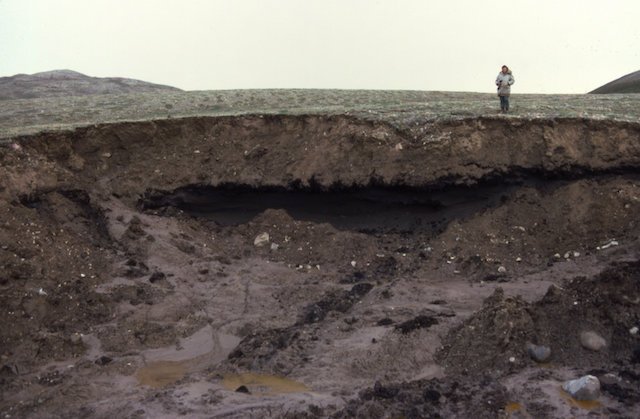
In a new study, researchers found climate change has been greatly reshaping the landscape of the Arctic.
The new finding suggests that it is time to take actions to reduce greenhouse gas emissions.
The study was conducted by researchers at the University of Ottawa.
Previous research has shown that the ground temperatures in the Arctic are increasing. This is seen as an indicator of global climate change.
However, there are areas of cold permafrost in the Arctic, which were thought to be relatively immune to severe impacts of climate change.
But the new study showed that even these areas of cold permafrost can be vulnerable to rising summer temperatures.
In the study, the team analyzed a set of satellite images from the Google Earth Engine Timelapse dataset.
They found an astounding sixty-fold increase in the number retrogressive thaw slumps on Banks Island over the past 30 years.
The thaw slumps were landslides caused by the melting of the ice in the permafrost.
The data showed that in 1984 there were about 60 active thaw slumps on the island. In 2013, however, there were more than 4,000.
The area impacted by active slumping is as big as the Island of Manhattan.
The team also found that 85% of new landslides on Banks Island occurred after four particularly hot summers (1998, 2010, 2011 and 2012).
the team predicts a further increase in retrogressive thaw slumps with global warming and rising temperatures. There could be 10,000 new slumps per decade on Banks Island alone.
The team suggests that it is impossible to stop thaw slumps once they start.
But humans can take actions to reduce carbon footprint and encourage governments to take the necessary measures to help reduce greenhouse gas emissions.
This will help protect the landscape of the Arctic.
The lead author of the study is Antoni Lewkowicz, a professor in the Department of Geography, Environment, and Geomatics.
The study is published in the journal Nature Communications.
Copyright © 2019 Knowridge Science Report. All rights reserved.



